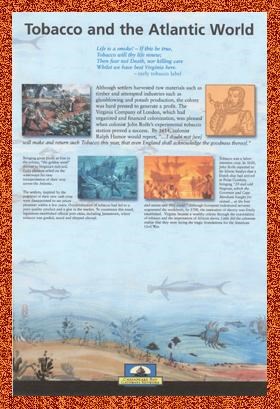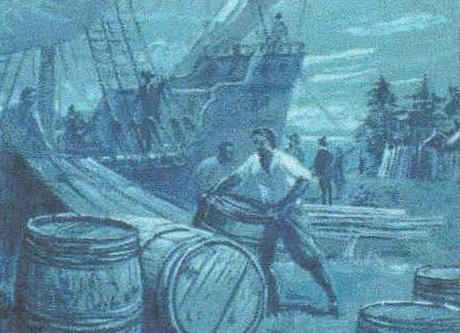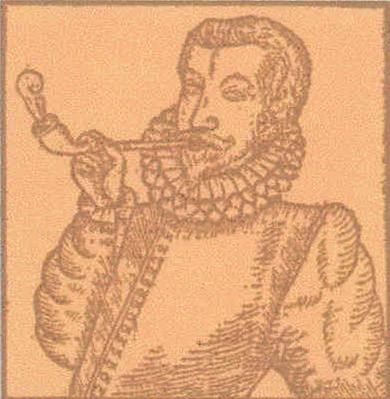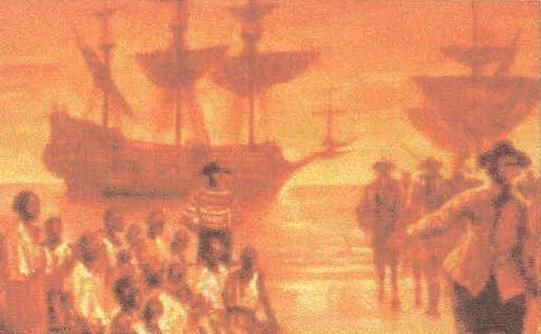
Life is a smoke! – If this be true, Tobacco will thy life renew; Then fear not Death, nor killing care Whilst we have best Virginia here.
-early tobacco label 
NPS image Although settlers harvested raw materials such as timber and attempted industries such as glassblowing and potash production, the colony was hard pressed to generate a profit. The Virginia Company of London, which had organized and financed colonization, was pleased when colonist John Rolfe’s experimental tobacco station proved a success. By 1614, colonist Ralph Hamor would report, “…I doubt not [we] will make and return such Tobacco this year, that even England shall acknowledge the goodness thereof.” 
NPS image
Bringing great profit at first to the colony, “the golden weed” thrived in Virginia’s rich soil. Early planters relied on the waterways for easy transportation of their crop across the Atlantic. 
Bringing great profit at first to the colony, “the golden weed” thrived in Virginia’s rich soil. Early planters relied on the waterways for easy transportation of their crop across the Atlantic. 
Tobacco was a labor-intensive crop. In 1619, John Rolfe reported to Sir Edwin Sandys that a Dutch ship had arrived at Point Comfort, bringing “20 and odd Negroes, which the Governor and Cape Merchant bought for victual… at the best and easiest rate they could.” Although European indentured servants augmented the workforce, by 1700, the institution of slavery was firmly established in Virginia. |
Last updated: March 31, 2012
